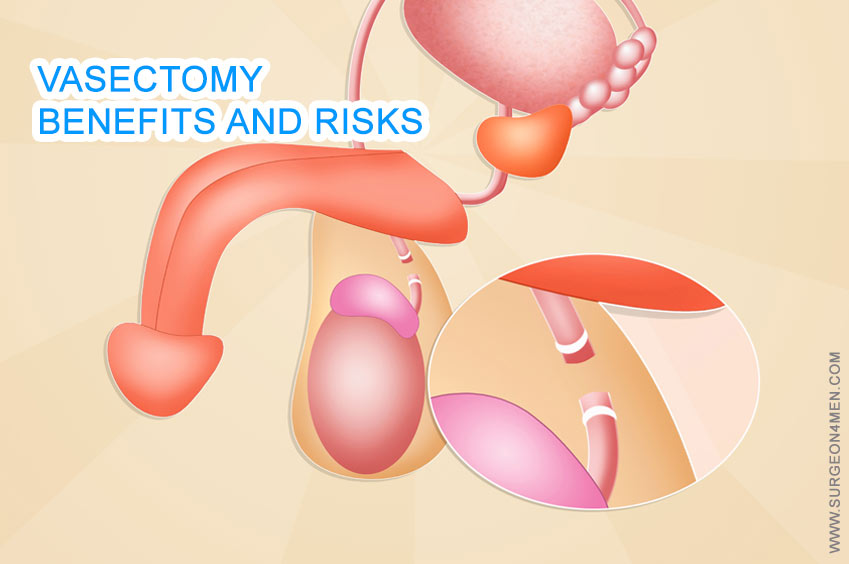Vasectomy | Benefits and Risks
Vasectomy is a permanent form of contraception. During this procedure, the vas deferens is cut surgically. It is the duct that allows the passage of the sperms from the testes to the urethra. Cutting this duct prevents the sperms from reaching urethra and being released during ejaculation.
After undergoing a vasectomy operation, the ejaculate becomes free of all sperms in around three months. Couples are advised to use alternate forms of contraception till this time. At the end of three months, the patient is asked to undergo semen analysis. It is only when the doctor gives his clearance after seeing the test report that vasectomy should be relied upon for contraception. Till then, having unprotected sex may lead to pregnancy.
Efficacy of Vasectomy
 Vasectomy is one of the most reliable forms of contraception in men. According to the UK National Sterilization Guidelines (2004), the failure rate of vasectomy stands at 1 in 2000 (0.05%) after clearance has been given by the doctor. Let us compare this rate to other means of sterilization.
Vasectomy is one of the most reliable forms of contraception in men. According to the UK National Sterilization Guidelines (2004), the failure rate of vasectomy stands at 1 in 2000 (0.05%) after clearance has been given by the doctor. Let us compare this rate to other means of sterilization.
Tubectomy carries a failure rate of 0.5%, contraceptive pills carry a failure rate of 0.16% to 3%, and barrier contraceptives have a failure rate of 1% to 33%. So we see that vasectomy, when carried out by an experienced hand, is a very dependable form of contraception.
Benefits of Vasectomy
Some of the benefits of vasectomy are:
- It is the most reliable form of contraception. It gives freedom to couples to enjoy their love life without the fear of pregnancy.
- Vasectomy is believed to improve the sex life of the couples. According to a study, 30% of the couple who chose vasectomy as a mode of contraception reported an increase in the frequency of love making.
- It is good for the health of the female partners who can avoid the side effects of birth control pills and intra-uterine devices (IUDs).
- Vasectomy is easier and less expensive as compared to tubal ligation in women.
Risks of Vasectomy
Like any other surgery, vasectomy also carries certain risks. These include:
 Formation of a hematoma
Formation of a hematoma- Infection at the site of operation
- Swelling of the scrotum
- Blood stained semen
- Sometimes, a granuloma is formed in in the scrotum due to .accumulation of leaked sperms from the vas deferens.
- 10% of men who undergo vasectomy report post-vasectomy pain syndrome.
- In a small number of cases, vasectomy may fail. This may be due to faulty surgical technique or regrowth and joining together of the two stumps of the vas deferens.
- Sometimes, the couple may regret their decision and want the vasectomy to be reversed. Although this is theoretically feasible, reversal surgery is usually not very successful. Therefore, the decision of vasectomy should be a well thought out decision. It should be taken only by men who have completed their family and do not intend to change partners. Request for reversal is usually made by men who remarry or are very young (less than thirty years old) when they take this decision.
Reference:
“What are the risks of vasectomy?” by National Institute of Health. Accessed on April 27, 2015, Retrieved from: http://www.nichd.nih.gov/health/topics/vasectomy/conditioninfo/pages/risk.aspx

